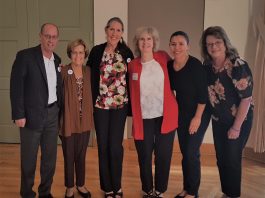Glancing Back While Moving Forward
Recently, a newspaper article informed that the projected average life span for a person born this year is 76.2 years.
Guest view: Be sure to take advantage of state EITC tax rebate
A much deserved windfall is on its way to many low- and moderate-income California workers. For those who file state taxes and claim their benefit in 2017, the state is offering an Earned Income Tax Credit (EITC) that, combined with what is available through the federal government, could provide up to a $6,000 rebate to families who meet specific qualifications.Research has shown that the cash benefit from the EITC has been one of the single greatest contributors to move people and families out of poverty and to improve their financial security. Unlike other programs to assist low- and moderate- income families, this benefit applies only to those who are working but still remain in financial difficulty. For many of us, $6,000 could ease our financial challenges and it could make the difference between a family keeping a roof over its head or becoming homeless.In 2015, Gov. Jerry Brown and the legislature created California’s EITC program, CalEITC, as a way to help qualified working, low-income families. This cash-back credit is intended to complement a similar federal EITC that has existed since enactment by President Gerald Ford in 1975. In order to benefit from the state credit, eligible families need to claim it when they file their state tax returns.According to the California Department of Community Services and Development (CSD), the state agency that administers CalEITC, one out of five eligible workers does not claim the EITC on their state income tax return. On average, a qualified family that did not participate in 2016 lost $2,409 from the state and federal governments.The specific amount of cash-back credits for qualified working individuals and families depends on income and family size. Californians with an income of up to $53,505 annually may be able to receive cash-back by claiming the federal EITC on their tax return. Additionally, California families that earn up to $14,161 annually may be able to utilize the CalEITC to supplement the federal EITC when a state tax return is filed.If you meet the criteria, you must file federal and state income tax returns to claim the credits, even if you do not owe taxes or are not required to file a return.For more information, visit CSD’s website, www.csd.ca.gov/. During this tax season, I encourage you to find out if you are eligible to receive the benefits of the Earned Income Tax Credit. Monning represents the 17th Senate District, which includes all of San Luis Obispo and Santa Cruz counties, and portions of Monterey and Santa Clara counties.
Reflecting on one who gave her life to education
It was with sadness that I learned of the passing last week of
When No News is Good News
Is it just me? It seems that whenever I turn to the news on TV or the radio these days, the world outlook simply gets bleaker by the minute. Could we – pleeeeeze – have just one 24-hour stretch of good news for a change? I was driving in major traffic recently, and before the news report was over I was "this close" to taking my purse and beating my radio senseless with it.
Live Oak High School’s Senior Ball Was Amazing
Amazing is the best word I can think of to describe the night of May 20th, 2006. Held at Monterey's Post Naval Graduate School, Senior Ball is a night that many look forward to and nobody can forget. Sadly, Senior Prom is the beginning of the end for seniors who only have 20 school days left until graduation.
Guest view: Show gratitude to veterans
Since the election last November, Americans are experiencing, with more frequency, encounters with people who have extremely different opinions from their own. However, when it comes to the men and women who valiantly serve our country, there is rarely disagreement that they deserve our support for the sacrifices they and their loved ones make to defend our country and the principles on which it was built. It is more important than ever that we stand steadfast as a nation to support military personnel during and after their service, and it was almost 100 years ago this November, in 1918, when the events of World War One provided the basis for what is now known as Veterans Day.Noting the 11th hour on the 11th day of the 11th month, an agreement to cease fire was declared between the Allied nations and Germany in Compiegne, France, bringing to an end the Great War. Originally known as Armistice Day in recognition of this interruption in the war, the observance was formally declared a federal holiday in the U.S. in 1938. Extending the holiday to honor all military men and women after World War Two and the Korean War, it was officially renamed Veterans Day in 1954.As we celebrate Veterans Day this year, I hope you will join me and express gratitude to our service women and men who dedicate themselves on our behalf to protect our great country. It is because of our confidence in them that we live without the fear of invasion or harm to our families as we go about our daily lives. To all of you who serve, you have my thanks and appreciation. I salute you and hope you stay safe.Sen. Bill Monning represents the 17th State Senate District, which includes all of San Luis Obispo and Santa Cruz counties, and portions of Monterey and Santa Clara counties.
Chamber Has Nothing to Hide with Taste of Morgan Hill
There has been speculation that the Morgan Hill Chamber of









